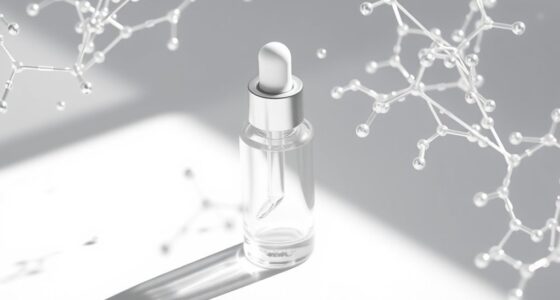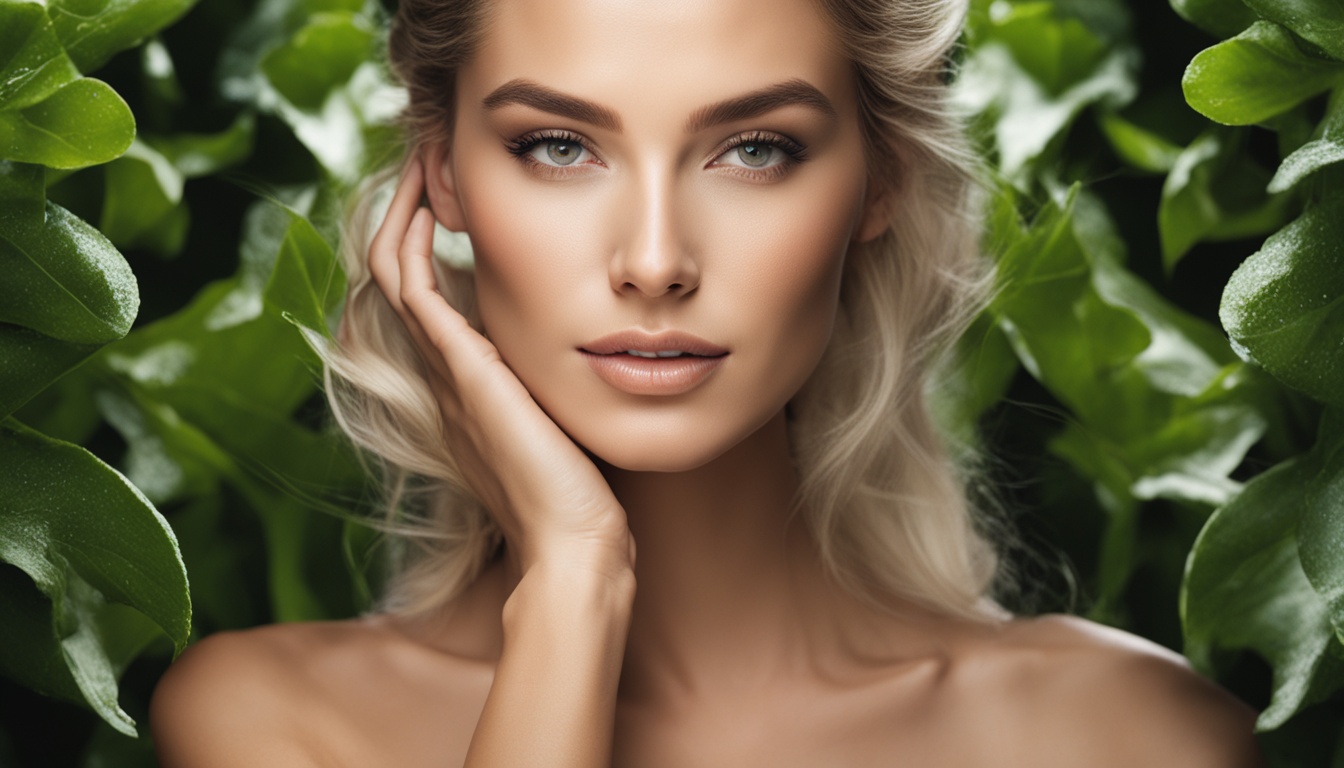Slugging works by applying a thick layer of occlusive agents like petroleum jelly, which creates a barrier that locks in moisture and supports your skin’s natural repair process. It prevents water from escaping, helping your skin stay hydrated, smooth, and resilient. This technique is especially beneficial if your skin is dry, damaged, or needs extra barrier protection. Curious to see if it’s right for you? Keep exploring to find out more about how it can boost your skin health.
Key Takeaways
- Slugging creates a physical barrier with occlusive agents like petroleum jelly, locking in moisture and enhancing skin barrier repair.
- It improves absorption of active skincare ingredients by preventing water and ingredient loss.
- Suitable for dry or dehydrated skin, helping to maintain hydration and resilience; not recommended for oily or acne-prone skin.
- The occlusive layer shields skin from environmental stressors, pollutants, and bacteria, supporting healing and regeneration.
- Individuals with sensitive or inflamed skin should test first or consult a dermatologist to prevent irritation or breakouts.

Have you ever wondered why “slugging” has become a popular skincare trend? It’s because many people are seeking a simple yet effective way to boost their skin’s health and appearance. The core idea behind slugging is applying a thick layer of petroleum jelly or a similar occlusive product over your usual skincare routine. This creates a barrier that locks in moisture, but it also influences how your skin absorbs moisturizers and helps repair the skin barrier. When done correctly, slugging can make a noticeable difference in how your skin feels and looks.
The main benefit of slugging is enhancing moisturizer absorption. Normally, your skin can sometimes struggle to fully absorb hydrating products, especially if your skin’s barrier is compromised or if you live in a dry climate. By sealing in moisture with an occlusive layer, you allow your skin to better retain the hydration from your serums and creams. This process ensures that active ingredients penetrate more effectively, giving your skin the nourishment it needs to stay plump, smooth, and healthy. Additionally, this barrier prevents water loss, which is especially useful during harsh weather or in air-conditioned environments that tend to dry out the skin.
Another critical aspect of slugging is that it supports skin barrier repair. Your skin barrier acts as a shield, defending against environmental stressors, pollutants, and bacteria. When this barrier becomes damaged or weakened — which can happen from over-exfoliation, harsh skincare ingredients, or pollution — your skin becomes more vulnerable to irritation, redness, and dehydration. Applying an occlusive like petroleum jelly helps to create a protective environment that promotes healing and regeneration. The barrier stays intact, preventing moisture from escaping and allowing the skin’s natural repair processes to do their work more efficiently.
However, slugging isn’t suitable for everyone. If you have very acne-prone or oily skin, applying a thick layer of occlusive can sometimes clog pores and worsen breakouts. Similarly, if your skin is already inflamed or irritated, slugging might exacerbate irritation rather than soothe it. It’s best to try it on a small patch first or consult with a dermatologist if you’re unsure. Ultimately, slugging works well for those with dry, dehydrated, or compromised skin who want to boost moisture retention and support barrier repair. When incorporated thoughtfully, it can be a simple yet powerful addition to your skincare routine, helping your skin stay healthy, resilient, and well-hydrated.
Frequently Asked Questions
Can Slugging Cause Breakouts or Acne?
Slugging can cause breakouts or acne if you have oily skin, as it may lead to oil clogging pores. If you’re prone to skin irritation, the occlusive nature of petroleum jelly might worsen inflammation or cause breakouts. It’s important to contemplate your skin type and avoid slugging if you notice increased oiliness or irritation. Always patch-test first and consult a dermatologist if you’re unsure whether it’s suitable for your skin.
How Long Should I Leave the Occlusive Layer On?
You should leave the occlusive layer on for about 15-20 minutes, allowing your skincare barrier to fully absorb the treatment. This helps lock in moisture and enhances your routine’s effectiveness. If you have sensitive or acne-prone skin, avoid leaving it on too long, as it might cause breakouts. Always listen to your skin’s response and adjust the time accordingly to protect your skincare barrier.
Is Slugging Suitable for Oily or Acne-Prone Skin?
Think of your skin as a busy city street; too much oil can cause traffic jams. If you have oily or acne-prone skin, slugging might seem like adding more fuel to the fire. While it can help lock in moisture, it could also clog pores and hinder oil control. If your skin struggles with excess oil or breakouts, it’s best to skip slugging or consult a dermatologist first, to avoid trapping impurities.
Are There Any Risks for Sensitive Skin Types?
If you have sensitive skin, you should be cautious with slugging, as it can compromise your skin barrier and increase ingredient sensitivity. The occlusive layer traps moisture but may also trap irritants or allergens, leading to redness or irritation. Always patch-test new products, and consider choosing gentle, fragrance-free occlusives. If you notice any discomfort, discontinue use to protect your skin’s health.
Can Slugging Replace Regular Moisturizer?
Imagine your skin as a thirsty plant needing water. Slugging isn’t a direct replacement for your regular moisturizer but a supplement, like a night-time watering can. It seals in hydration, enhancing your skin hydration techniques. If your goal is long-lasting moisture, slugging acts as a protective layer. For daily nourishment, stick with your usual moisturizer. Think of slugging as an extra boost, not a total substitute.
Conclusion
So, now you know the science behind slugging—like a nightly shield, it locks in moisture and keeps your skin thriving. But remember, it’s not a one-size-fits-all magic wand; your skin’s unique melody matters. If you’re cautious or sensitive, tread carefully. Think of slugging as a gentle dance, not a wild storm. When done right, it can be your skin’s lullaby—calm, protected, and glowing through the night.










